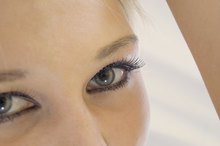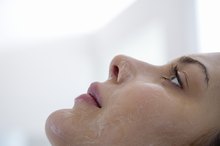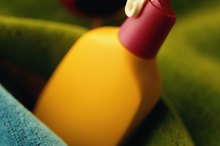How to Reduce Redness With Retin-A
Retin-A is a brand of tretinoin that's applied topically to the skin to treat a variety of conditions. It improves acne, hyperpigmentation and even wrinkles, but is not without side effects. In fact, Retin-A has been known to cause some redness in the skin as well as irritation after use because it helps the layers of skin slough off faster. That being said, with proper care and attention to your skin's needs, you can reduce this redness and notice more impressive results from your course of treatment.
Use Retin-A as prescribed by your dermatologist. The most common dosage is to apply the medication to your skin each evening after you have cleansed it thoroughly, according to RxList.com. Using too much of the product too frequently can cause redness to increase and could even cause your acne to get worse, so be mindful to use as little of the product as possible while still covering the area to be treated.
How to Reduce Redness After a Chemical Peel
Learn More
Stay out of the sun as much as possible. Retin-A makes your skin more sensitive to the sun, so using it and going outside can cause you to get a sunburn very quickly. This can leave you looking red. Instead, use a sunscreen of at least SPF 15 when going out to protect your sensitive skin.
Use foundation to cover up the redness caused by Retin-A 2. A yellow-tinted foundation or powder is best since it will counteract the redness and hide it more effectively. If the redness you experience is localized to just a few spots on your face, a concealer stick might be more practical.
How to Use Retin-A 0.05
Learn More
Moisturize your skin. Since Retin-A can be so drying on your skin, you should use a moisturizer each morning and night to keep your skin hydrated, to reduce irritation and visible peeling and to calm redness. An oil-free formula is a must to avoid clogging pores.
Related Articles
References
- YourPlasticSurgeryGuide.com: Retin A - More Than Just an Acne Treatment
- Drugs.com: Retin-A Cream Facts and Comparisons
- RxList.com: Retin-A Micro (Tretinoin Gel) Drug Information
- Leyden J, Stein-gold L, Weiss J. Why Topical Retinoids Are Mainstay of Therapy for Acne. Dermatol Ther (Heidelb). 2017;7(3):293-304. doi:10.1007/s13555-017-0185-2
- U.S. Food & Drug Administration. Retin-A [labeling]. Updated June 10, 2002.
- Knor T. Flattening of atrophic acne scars by using tretinoin by iontophoresis. Acta Dermatovenerol Croat. 2004;12(2):84-91.
- Davis EC, Callender VD. Postinflammatory hyperpigmentation: a review of the epidemiology, clinical features, and treatment options in skin of color. J Clin Aesthet Dermatol. 2010;3(7):20-31.
- Mukherjee S, Date A, Patravale V, Korting HC, Roeder A, Weindl G. Retinoids in the treatment of skin aging: an overview of clinical efficacy and safety. Clin Interv Aging. 2006;1(4):327-48.
- U.S. Food & Drug Administration. RETIN-A MICRO® [labeling]. Revised January 2014.
- Chen K, White TJ, Juzba M, Chang E. Oral isotretinoin: an analysis of its utilization in a managed care organization. J Manag Care Pharm. 2002;8(4):272-7. doi:10.18553/jmcp.2002.8.4.272
- "Tretinoin Topical." MedlinePlus. 03 April 2000. U.S. National Library of Medicine & National Institutes of Health.
- Kircik LH. "Evaluating tretinoin formulations in the Treatment of Acne." Journal of Drugs in Dermatology. 2014 Apr;13(4):466-70.
- Yeh L, Bonati LM, Silverberg NB. "Topical Retinoids for Acne."Seminars in Cutaneous Medicine and Surgery. 2016 Jun;35(2):50-6.
- Zaenglein AL, Pathy AL, Schlosser BJ, Alikhan A, Baldwin HE, et. al. "Guidelines of Care for the Management of Acne Vulgaris." Journal of the American Academy of Dermatology 74.5 (2016): 945-73.
Writer Bio
Brenda Barron is a writer, editor and researcher based in Southern California. She has worked as a writer since 2004, with work appearing in online and print publications such as BabyZone, "Cat Fancy" and "ePregnancy." She holds a Bachelor of Arts in English literature from California State University, Long Beach.









